River Corridor Hydrobiogeochemistry Science Focus Area
Transforming our understanding of spatial and temporal dynamics in river corridor hydrobiogeochemical functions from molecular reaction to watershed and multi- basin scales

River Corridor SFA
(Image by Nathan Johnson | Pacific Northwest National Laboratory)
The Pacific Northwest National Laboratory (PNNL) River Corridor Hydrobiogeochemistry Scientific Focus Area (SFA) works to transform understanding of spatial and temporal dynamics in river corridor hydrobiogeochemical functions from molecular reaction to watershed and multi-basin scales. The knowledge we gain is used to improve mechanistic representation of river corridor processes, and their response to disturbances, in multiscale models of integrated hydrobiogeochemical function.
Project successes
As a collective, the River Corridor-Science Focus Area (RC-SFA) progress over the past four years has been expansive. We revealed how wildfire affects cascade from hillslope vegetation dynamics, to soil physics, to stream network hydrology and aqueous chemistry, demonstrated that nearly all stream ecosystem respiration across diverse environments can be from sediment-associated respiration (ERsed) driven by benthic primary producers, found that dissolved organic matter (DOM) chemistry is the most important driver of batch-scale ERsed across the contiguous United States (CONUS), discovered CONUS-wide transferable patterns linking watershed physical properties to DOM chemistry and microbial community gene expression, showed that hydrologic exchange flows (HEFs) dominate not only reach-scale ERsed across basins but also ERsed allometry. Research proposed for FY 2025–2028 builds on this progress (Fig. 1).
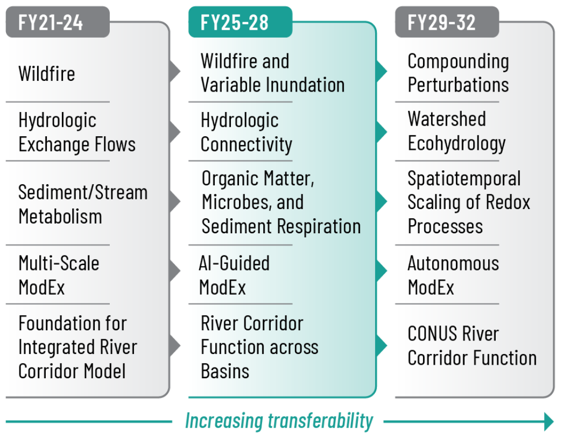
Current priorities
The Earth system is increasingly impacted by perturbations that directly and indirectly result from human activity. Watershed systems are a foundational unit of Earth’s land surface; how these systems will respond to perturbations over the coming decades is highly uncertain. This uncertainty needs to be reduced to enable effective decisions in support of the Department of Energy’s mission. In the long-term, the RC-SFA will meet this need by delivering predictive understanding of how perturbations impact watershed hydro-biogeochemistry (HBGC) across the hillslope-to-stream continuum. In the next four years, we will reveal how perturbations interact with each other and with other environmental features to influence the movement of water and transformations of organic matter in connected surface and subsurface components of watersheds (Fig. 2). We focus on wildfire and drying of streams as two interacting perturbations that are shifting in frequency, duration, and/or severity and that have highly uncertain impacts on watershed HBGC that are relevant across most of Earth’s land surface (Fig. 3). Given the global relevance of and shifting impacts of these perturbations, we need clarity on how they jointly impact watershed HBGC. Otherwise, we risk increasingly uncertain predictions for future land surface water and organic matter dynamics. The RC-SFA will protect against this risk through a novel focus on interactions between wildfire and variable inundation across environmentally divergent basins of the contiguous United States.
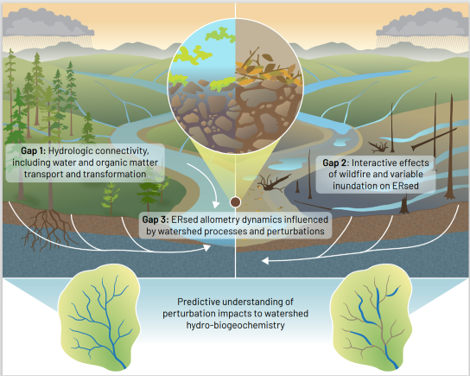
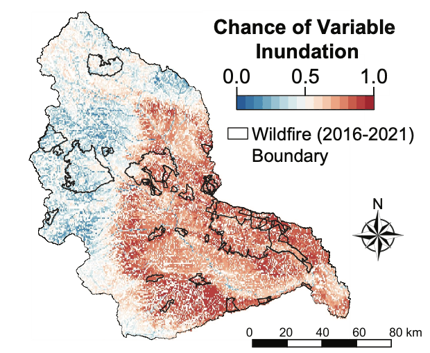
How we do science is as important as the hypotheses we test and the methods we use. We value team science built on a foundation of a respectful, secure, and safe environment. To achieve transferable and mutually beneficial science outcomes, we will use ICON (integrated, coordinated, open, networked) science principles to guide design and implementation of our research. We will merge model-experiment (ModEx) iteration, intensive place-based research aimed at deep mechanistic understanding (using a single-basin testbed), and widely distributed efforts across the CONUS aimed at transferability (through the WHONDRS consortium) (Fig. 4). In this hypothesis-centered approach, conceptual and mechanistic understanding will guide model development, model predictions will guide data generation, and interpretation of generated data will guide further model development.
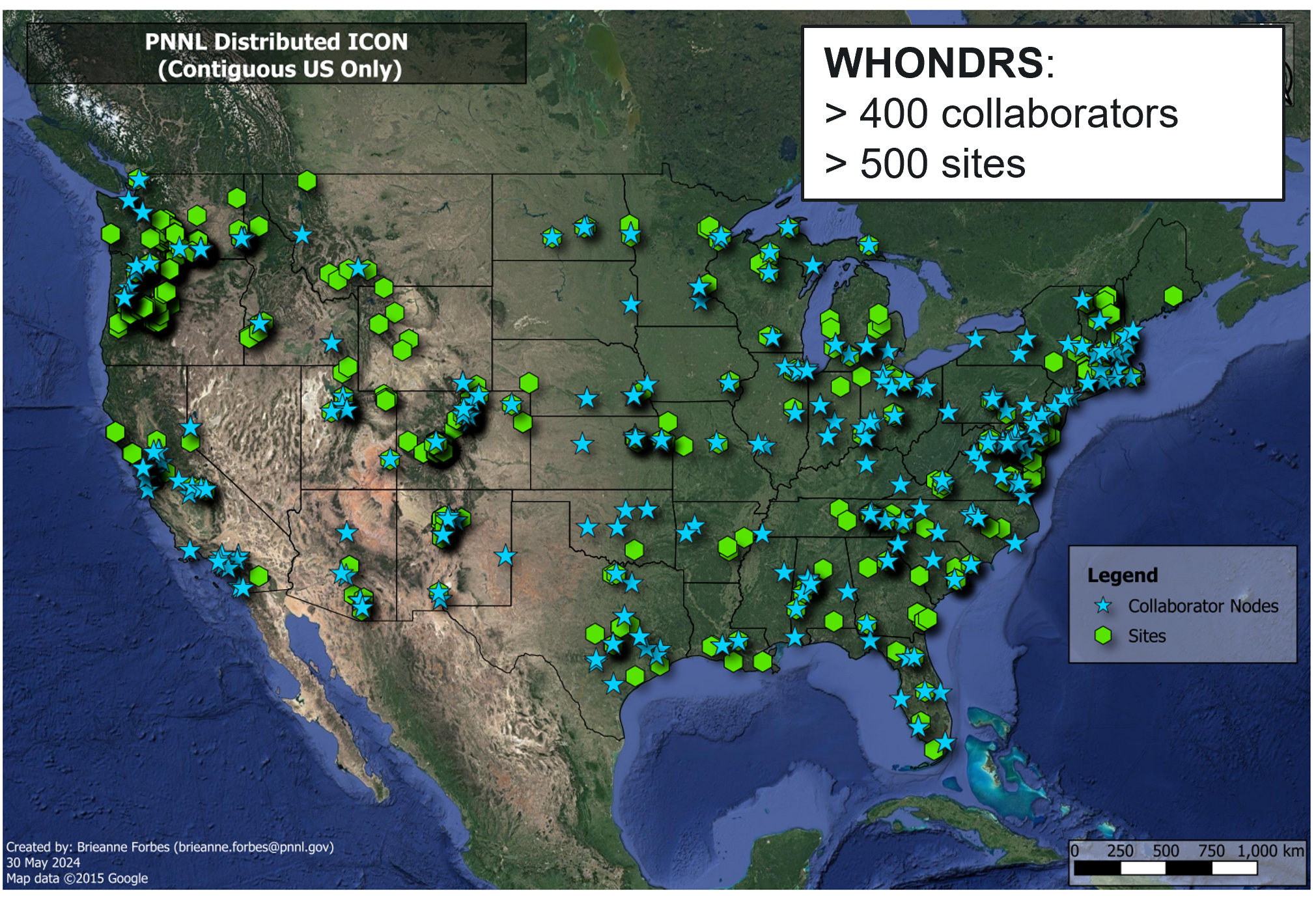
Long-term vision
Mechanistically understand how perturbations affect HBGC across the hillslope-to-stream continuum. We will progressively deliver new understanding, model advances, and benchmark data to Earth system modeling efforts to improve predictive confidence for future states of the Earth system.
Near-term objective
Reveal how wildfires and environmental features jointly influence ecohydrology and hydrologic connectivity from hillslopes to streams, variable inundation dynamics in stream networks, and subsequent biogeochemical impacts (Fig. 5). For our near-term objective, we will resolve knowledge gaps about interactions among physical, chemical, and biological mechanisms—from molecular to watershed scales—that connect perturbations to hydro-biogeochemical responses. In turn, we will quantify the influences of wildfire, variable inundation, and molecular-scale properties of organic matter (OM) chemistry and microbes. These influences will be quantified as changes to the spatiotemporal scaling of ERsed in stream networks.
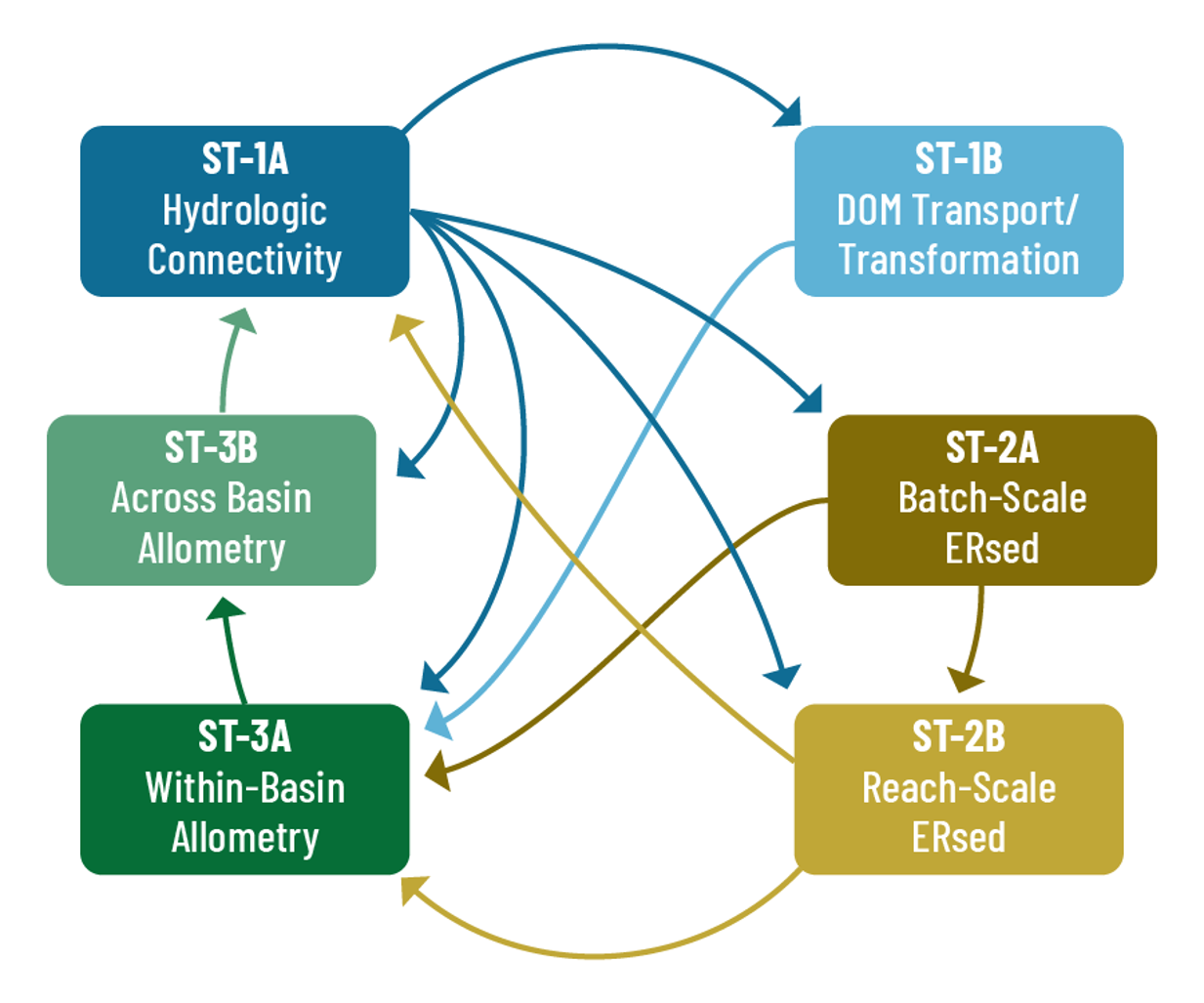
Overarching science questions
- ST-1A: Across Yakima River Basin (YRB) watersheds in south-central Washington State (our single-basin testbed), how do precipitation, temperature, vegetation, subsurface hydrogeology, and wildfires control hydrologic connectivity and flow intermittency?
- ST-1B: How are wildfire impacts on stream OM chemistry mediated by the relative influence of subsurface pathways to the transport and transformation of dissolved OM (DOM)
- ST-2A: Across YRB and CONUS watersheds, how do variable inundation and pyrogenic OM (PyOM) interactively influence ERsed via changes to microbial communities and OM chemistry?
- ST-2B: Across YRB reaches, what is the optimal combination of flow path, flow velocity, inundation history, and sediment texture that maximizes ERsed post-inundation?
- ST-3A: Across YRB watersheds, to what degree do variable inundation, wildfire, and molecular properties individually and interactively influence ERsed allometry dynamics, in context of constraints imposed by HEFs?
- ST-3B: Across CONUS watersheds with divergent biophysical conditions, to what degree do the primary drivers of ERsed allometry change and are there systematic shifts in the primary drivers across the arid-to-mesic continuum?
Acknowledgments
This research is supported by the U.S. Department of Energy (DOE), Office of Science, Biological and Environmental Research (BER) Earth Systems Science (ESS) program. This contribution originates from the River Corridor Hydrobiogeochemistry Scientific Focus Area (SFA) at the Pacific Northwest National Laboratory (PNNL).
A portion of the research is performed within the Environmental Molecular Sciences Laboratory (EMSL), a DOE Office of Science User Facility sponsored by BER and located at the PNNL-Richland campus.